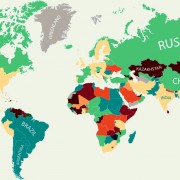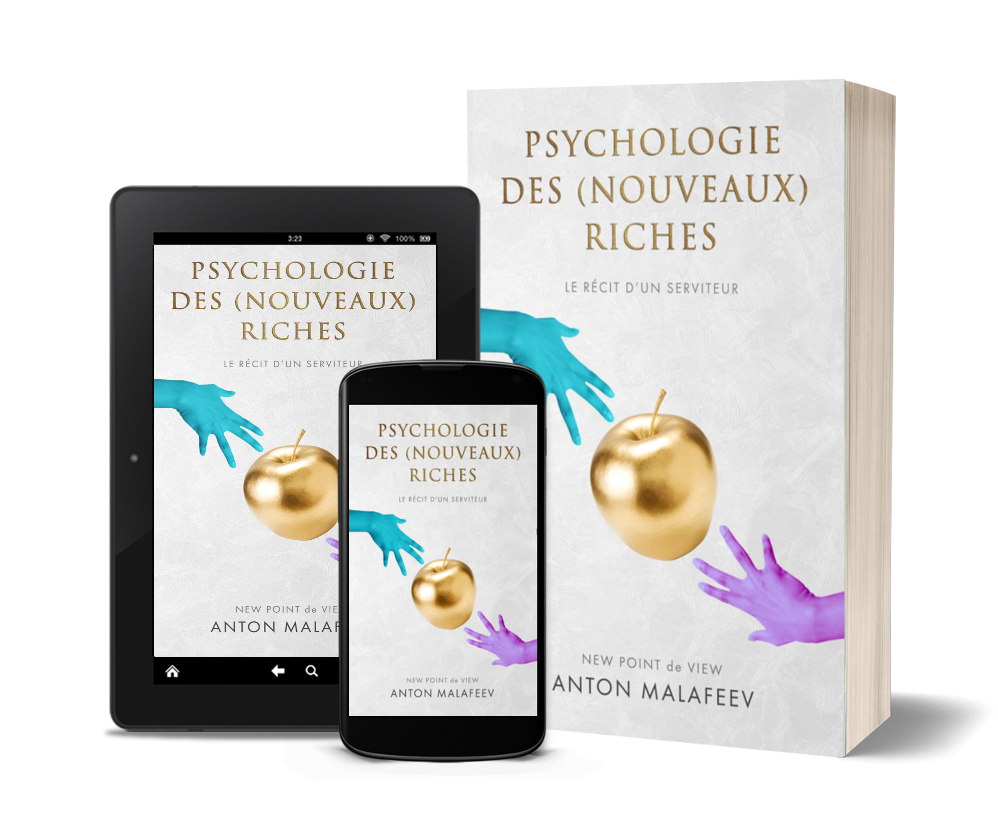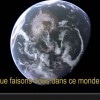Speculative Design for Ecocentric Innovation
Innovation has been traditionally situated in the realm of the human. In modern society, we treat nature as a source of capital and our idea of sustainable innovation is driven from an anthropocentric view of the world. Human-centred designs tendency of reducing complexity to increase convenience has created an artificial world that disconnects us from the ecosystem that sustains us. Innovation traditionally focuses on bringing about change in business models, technology and marketing. Innovation models are subordinate to business and design exists in the service of capitalism. In this paper, we look at why we should include the other as an important stakeholder in the innovation process. While there are no definite ways to include non-human ways, it is important to consider non-human ecosystems as innovations to increase human convenience affect the larger ecosystem.
Introduction
The world is in crisis. Institute of Public Policy Research says human impacts have reached a critical stage and threaten to destabilize society and the global economy.(1) We live in a world with rapid anthropogenic environmental changes. We treat nature as a resource which exists only to fulfil human wants and needs. Such reckless treatment of the world around us is starting to manifest across the world through increased pollution, climate change etc.
Design practices have always been human-led which puts the needs of the human over the survival of other species. While practices such as sustainable innovation are on the rise, the paper believes that these practices are alone not enough to tackle the environmental issues that face us. What used to be, means to an end is now the end for most of society. Ecocentrism provides us with a new way of looking at the world in harmony with nature. The paper proposes ways on how ecocentrism can be introduced in innovation practices today while slowly creating a shift away from anthropocentric practices.

Literature Review
Anthropocentrism, in its original connotation in environmental ethics, is the belief that value is human-centred and that all other beings are means to human ends.(11) Anthropocentrism coupled with ”objective thinking” is characteristic of our scientific-technological world view, i.e., the mechanistic worldviews developed in the 17th century. This approach redirects attention to the cultural conditioning of the human as superior and entitled. There are inevitable beliefs that stem from such conditioning (2):
- earth belongs to humanity;
- the planet is just a resource for all human beings;
- humans are obviously superior to all other beings.
The capitalist economic system has often been seen as a key driver of both anthropocentric thinking and anthropogenic environmental degradation. Profiting drives the average humans’ existence. We work to earn a profit to live comfortably or just to survive. But either way, we are supposed to profit as much as possible to earn nicer and nicer things, even if doing so is at the expense of the environment or even other people. Oftentimes in trade markets achieving the largest profit involves forgoing sustainability.(8)
In 1987, the UN defined sustainability as meeting the needs of the present without compromising the ability of future generations to meet their own needs. The implication of this approach, as seen from an economics standpoint, is a requirement for constant consumption or, phrased in a slightly more abstract manner, constant utility.(12) This definition of sustainability assumes that as long as human needs are met, an initiative is sustainable. However the definition does not include what these needs are, and there have been no restrictions on what the limits of human needs are. Their argument is that what was originally a means to an end have become ends in themselves.
Sustainable initiatives can follow either weak sustainability or strong sustainability. In weak sustainable development, nature is predominantly seen as a resource to which we have a right of dominion and there is a belief that economic growth is a valid measure of progress. Weaker sustainable development, therefore, adopts an anthropocentric (human-centred) discourse on the relationship between people and nature. This is composed of three strands:
- the perception that people are separate from nature;
- the idea that nature is a resource to be used for the benefit of society or individuals;
- and the view that we have the right to dominate nature. Any problems that arise will thus be solved through technological development.(12)
One example of such dependence on technology comes from the possible extinction of bees. Bees are one of the largest pollinators on the planet and many reasons such as loss of flower meadows, the crab-like varroa mite that feasts on their blood, climate change, and use of pesticides have caused a decline in the species.(5) The approaches being looked at in the possible event of extinction is to develop Robot Bees, miniature drones that can help pollination. The problems that arise from such a mechanistic worldview is evident from the questions that can be raised. Where does the material for building a billion robot drones come from? How do we dispose the drones after the lifecycle and what about other aspects of a bee like making honey, which is not only a human food but also is a form of sustenance for many living beings.
Eastern philosophies already have a worldview where everything is connected and humans beings are not separate from the planet. Everything in one way or another effect everything else. Even if we can’t identify that. Particularly the modern economy growing, growing, growing, innovating, innovating, innovating is the kind of default mode of action.(3) One of the earliest examples of ecocentrist values is Chinese Daoism, which is believed to have originated in the late 4th Century BCE. Nature has an important role in Daoism, which teaches that harmony and balance between humanity and nature are of paramount importance. Daoists believe that the excessive exploitation of nature in the pursuit of development will lead to disaster by disrupting that crucial balance.(8)
The difficulty with a human-centred approach to design is that it often fails to look beyond the immediate user, toward the other that might be affected by a design, not only other humans but other-than-humans: ecologies, bacteria, air, soil, artificial intelligence, etc. Human-centred design, applied to gain an economic advantage, all too often seeks easy solutions that satisfy users within unsustainable systems in a world of finite resources. As designers, we currently lack a framework for strategically including perspectives of the other. A systemic approach can be effective in understanding a designs wider context and implications. But since the design has been historically human-centred, it may lack the tools for including other perspectives, and for creating empathy and a sensitivity toward the other-than-human when evaluating, rethinking, and designing these systems.(10)
Innovation today is focussed on improving business models, technology and marketing strategies. Hyper-consumption is considered a good thing as more consumption leads to more profits for these organisations. When consumption is a goal, the innovation processes are inevitably centred around achieving this as their end goal. Innovation models focus primarily on reducing costs associated with production and distribution. Sustainable innovation methods like circular economies employed across organisations are still very anthropocentric in nature. In a conventional capitalist economy, recycling will be undertaken only where it is desirable from a private economic viewpoint.(6)
Ecocentrism is the alternate worldview which aims to address the shortcomings of the anthropocentric view of the world. An ecocentric worldview would be radically egalitarian in that such objects like rivers and lakes, as well as animals and humans, would be conceived of as possessing intrinsic value.(7) Ecocentrist principles are more often seen in Eastern religious traditions. Unlike Western religion, which focused on the inherent value and, ultimately, the supremacy of humanity, Eastern religions more often focused on humanity’s place within a broader system. There is an urgency in adopting an alternate worldview since a great deal of the ecological crisis faced by the planet is a direct consequence of human activities of production, distribution and consumption. As long as humans are of the opinion that they are superior, exploitation is inevitable.
Modern society’s idea of progress is more development and innovation. These ideas are a very Western view of living. It is not just nature that has faced the brunt of such worldviews. Anthropocentrism leads to ideational and physical displacements. We have often used certain distinctions to confirm the supremacy of man, the ability to reason, language, morality, civilisation, technology and free will. Such distinctions create hierarchical narrations of life, where it becomes a moral order sanctioning man’s use of everything beneath him.(2) Anthropocentrism has always been articulated from the interests of one class or group, which assumes its interests represent the true interest of humanity, but so often it becomes a way of creating a hierarchy which leads to exploitation.(7)
So how does innovation models lead us away from anthropocentrism to an ecocentric view of the world? Speculative realism challenges this anthropocentrism and seeks to expand philosophical thinking to consider perspectives and notions of the other,(10) including that which lies beyond human experience and perception. Object-oriented ontology, a subset of speculative realism, uses flat ontologies to understand reality. This means all objects living and nonliving entities, sometimes even fictional objects are considered to have the same degree of being-ness in the world. Speculative designs practices of engagement, and of going beyond what could be, may need to be reconsidered. Mortons concept of the hyperobject can provide useful guidance. Design interacts with hyperobjects pervasive objects such as capitalism or climate change, which are of such vast temporal and spatial dimensions that they defeat traditional ideas about what a thing is. (10) Speculative design allows us to engage in meaningful discussions on these complex topics. By being speculative in nature, it allows us to engage in the views of the other.

Speculations as a tool to promote ecocentrism in Innovation
Over the course of three decades, modern organisations have been the target of escalating criticism from environmentalists. Anthropocentrism must be recognised and eradicated before fundamental changes can take place in people’s attitudes and actions toward the nonhuman world. Anthropocentric attitude essentially denies that nature has any inherent worth. Innovation like design has become a tool to serve the greed of capitalism. Even models of sustainable innovation adopt an anthropocentric view: while they do minimise the resources required to produce capital, they don’t address the issues of hyperconsumption behaviours that may deplete these resources for non-human populations on the planet.
While this paper does not call for an immediate shift from anthropocentric views of the world to a completely ecocentric view, as that would require changing the core values of a few billion people overnight, ecocentrism brings its own issues of ecological nihilism. However, this paper calls for trying to incorporate aspects of ecocentrism into the process of innovation in an organization. By incorporating ecocentrism into the process of innovation, we move away from accepted binaries and open up newer possibilities.
Speculative Design is a Critical Design practice that comprises or is in relation to a series of similar practices known under the following names: Critical design, design fiction, future design, anti-design, radical design, interrogative design, discursive design, adversarial design, futurescape, design art, etc…(9) Traditional design methods have followed the status quo and mostly involves problem-solving and making people buy. Speculative design encourages us to critically look at the status quo and ask questions. By engaging in discourse with a range of people, we can identify the shortcomings of technology even before we get there. Many organisations adopt trend forecasting as a way to predict the future of their products but this narrows down the possibilities based on historical models. Dunne and Raby in their book, Speculative Everything, categorise futures into the PPPP model (Plausible, Preferable, Probable and Possible). By acknowledging the presence of multiple futures, organisations can create space for newer innovations.
Speculative design has had its fair share of criticism. It is characterised as “Eurocentric”, highlighting its excessive focus on aesthetics (on the visual and narrative level), tendency to escape to dystopian scenarios, vanity, and separation from the real world. Cameron Tonkinwise underlines that many dystopian scenarios found in the present-day speculative fictions (of the Western world) actually (and unfortunately) have been already taking place in other parts of the world.(13) Some of these concerns can be alleviated by situating the project within the context and trying to understand it through diverse perspectives, human and non-human. Speculative design projects must also be inter-disciplinary in nature. This prevents narrow ways of viewing the world and opens up conversations.
Conclusion
The paper highlights the anthropocentric ways of viewing the world and how this impacts the idea of innovation. These very Western ways of thinking and creating a duality between humans and nature has resulted in significant destruction of the planet. The paper calls for the ideas of ecocentrism to create greater respect for nature. Even modern sustainable innovations, while minimising resource use, still focus on hyper-consumption and a lack of awareness on its impact for the other. We need to move away from the ideas of a human-centred world and look at including nature as a key stakeholder. While there are significant challenges in doing this, speculative design offers a chance to promote ecocentricity during the various stages of innovation.
This article was originally published at Prototypr.io
References
- Environment in multiple crises – report
- Confronting anthropocentrism
- John Thackara designing for all of life and not just human life
- Mitigation of shock
- Robotic bees could pollinate plants in case of insect apocalypse
- Andersen, M.S.: An introductory note on the environmental economics of the circular economy. Sustain Sci (2006)
- Brown, C.S.: Anthropocentrism and ecocentrism: the quest for a new worldview. The Midwest Quarterly (1995)
- Jennifer Gribben, J.M.F.: Anthropocentric attitudes in modern society, none
- Johannessen, L.K.: The young designers guide to speculative and critical design, speculative and Critical Design (SCD) confronts commercial and traditional design practice. It seeks to change contemporary perceptions of products and norms, instead of reproducing and reinforcing them. For example, SCD explores the societal ramifications following from domestication of technology. Through the design of critical objects and speculative narratives, SCD attempts to spur social debate on what is a preferable development. This article discusses SCD and its purpose, attitude, and foundation, as well as its postmodern background and contemporary context. The definition of SCD is fringed; SCD is commonly presented through examples, and there is little succinct methodology available for designers who want to understand or conduct SCD. This article attempts to give a clear description of the SCD position and to codify SCD practice.
- Schmeer, J.: Xenodesignerly ways of knowing, this essay argues that human-centred design, which for many years has been the predominant paradigm within the field of design, has in part contributed to contemporary environmental and social problems through its servicing role within the systems that created it. It argues for resisting reduction by developing more inclusive, multi-perspective design practices, taking the complex entanglements of humans and other entities into consideration. The essay introduces the notion of xenodesign, an approach guided by principles and theories from speculative design as well as from Xeno discourses and speculative realism, which are characterized by an engagement with experiences and perspectives beyond the human and an understanding of all entities on an equal level humans, ecologies, bacteria, air, soil, artificial intelligences, etc. It explores what might constitute a xenodesignerly practice in three approaches, illustrated through examples from design.
- Haydn Washington, Bron Taylor, John J Piccolo, H.K.: Anthropocentrism: More than just a misunderstood problem. Journal of Agricultural and Environmental Ethics (2018)
- WILLIAMS, C.C., MILLINGTON, A.C.: The diverse and contested meanings of sustainable development. The Geographical Journal, Vol. 170 (2004)
- Speculative design in the real world
Si vous avez trouvé une faute d’orthographe, faites le nous savoir en sélectionnant ce texte et en appuyant sur Ctrl+Entrée.

 © Bluefam
© Bluefam




 Teun Hocks
Teun Hocks

 Teun Hocks
Teun Hocks
Leave a Reply
Want to join the discussion?Feel free to contribute!